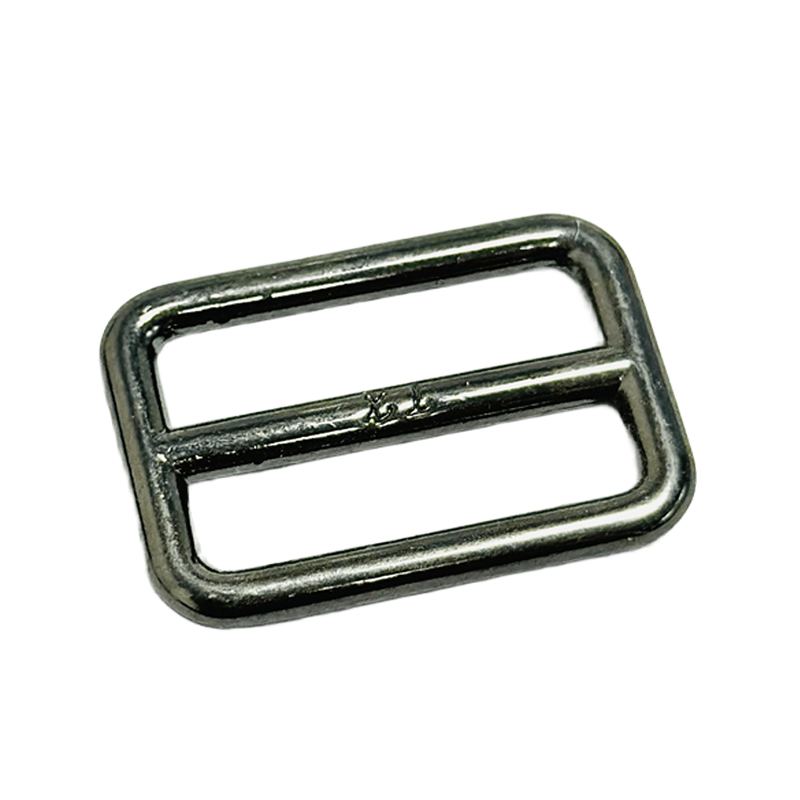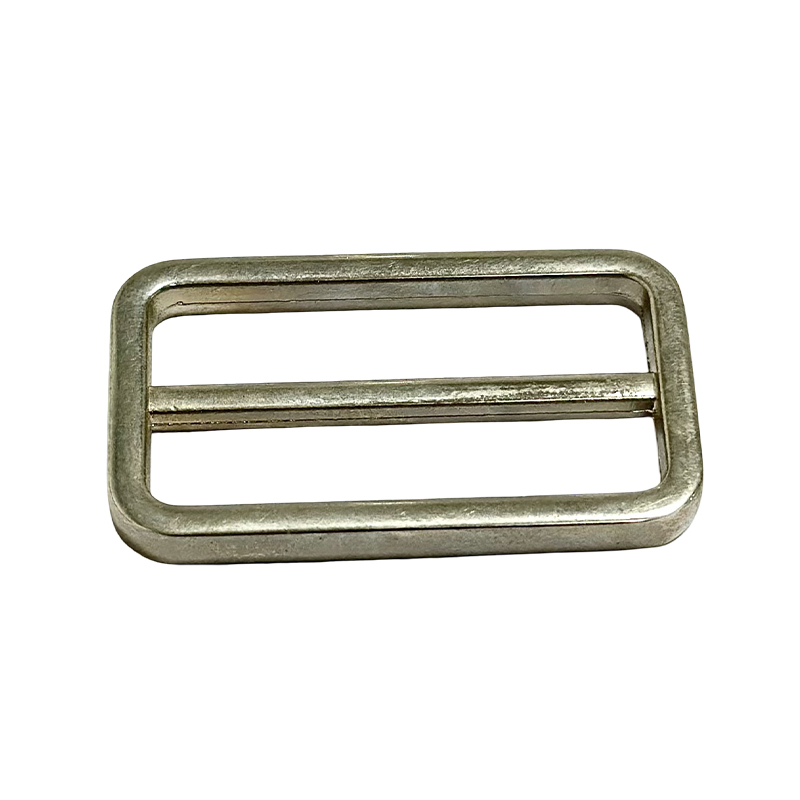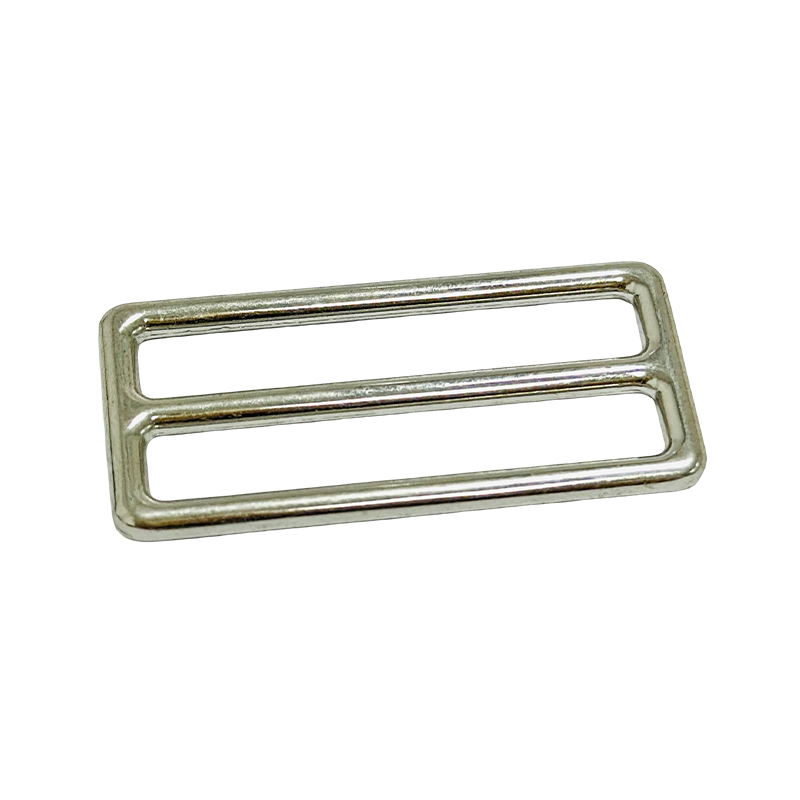How can the low-temperature toughness of alloy dog buckle be improved through heat treatment?
Release Time : 2025-10-28
The low-temperature toughness of alloy dog buckle is a key indicator of its structural integrity and functional reliability in cold environments. Heat treatment, as a core method for improving metal material properties, can significantly enhance its low-temperature toughness by manipulating its microstructure. This process requires a combination of alloy composition characteristics, phase transformation patterns, and optimized process parameters to achieve a balance between improved toughness, strength, and cost.
The improvement in low-temperature toughness achieved by heat treatment is primarily manifested in the synergistic effect of quenching and tempering. Quenching transforms austenite into martensite or bainite through rapid cooling, forming a high-strength matrix. However, overquenching can lead to grain coarsening and residual stress concentration, which in turn reduces toughness. Therefore, the quenching temperature and cooling rate must be adjusted based on the alloy composition (such as the presence of elements such as manganese and nickel). For example, nickel-containing alloys can achieve grain refinement by lowering the phase transformation temperature. Subsequently, tempering involves heating to an appropriate temperature and holding the temperature to decompose the martensite into tempered martensite or bainite, while simultaneously precipitating fine carbides, eliminating internal stresses and improving toughness. This "quenching + tempering" combination optimizes the balance between strength and toughness, ensuring that alloy dog buckle maintains sufficient strength at low temperatures while also resisting crack growth.
Quenching and tempering is another effective method for improving the low-temperature toughness of alloy dog buckle. This process combines quenching with high-temperature tempering to produce a tempered bainite structure characterized by fine carbides evenly distributed within a ferrite matrix. This microstructure effectively inhibits crack initiation and propagation at low temperatures while maintaining high yield strength. For example, the ductile-brittle transition temperature of quenched and tempered alloy dog buckle is significantly lowered, enabling it to maintain a ductile fracture mode at lower temperatures and avoid the risk of brittle fracture.
Controlling the cooling rate during heat treatment is crucial for improving low-temperature toughness. Rapid cooling refines the grains but can induce structural stresses, while slow cooling can easily lead to grain coarsening. Therefore, it's important to select an appropriate cooling medium (such as oil, water, or polymer solution) based on the specific alloy dog buckle composition (e.g., low-carbon, low-alloy or high-strength maraging steel). A balanced approach between microstructure refinement and stress release must be achieved through staged cooling or austempering. For example, austempering can maintain heat in the bainite transformation zone, forming a composite structure of upper bainite and retained austenite, significantly improving low-temperature toughness.
Optimizing alloy composition and coordinating heat treatment processes are key to improving low-temperature toughness. For example, adding elements like nickel and titanium can lower the phase transformation temperature and promote the formation of finer grains. Meanwhile, the addition of rare earth elements (REEs) purifies the steel and reduces the impact of inclusions on toughness. During heat treatment, these elements further refine the microstructure and improve toughness through solid solution strengthening or secondary phase precipitation. For example, comprehensive deoxidation of alloys containing aluminum, silicon, and calcium can form spherical, high-melting-point sulfides, mitigating the adverse effects of lamellar inclusions on toughness.
Heat treatment can also improve low-temperature toughness by controlling the retained austenite content. Retained austenite, a ductile phase, can undergo transformation-induced plasticity (TRIP) during deformation, alleviating stress concentration at the crack tip. By using critical tempering or adjusting the quenching temperature, an appropriate amount of retained austenite can be retained in the alloy dog buckle, allowing it to absorb energy through phase transformation at low temperatures and improve fracture resistance.
In actual production, the heat treatment process for alloy dog buckle requires a comprehensive consideration of cost, efficiency, and performance. For example, a step-by-step annealing, quenching, and tempering process can significantly improve the mechanical properties of the core and surface by refining the grain size and homogenizing the microstructure. Vibration treatment can further enhance the material's ductility and stability by eliminating internal stresses. These process optimizations enable alloy dog buckle to meet low-temperature toughness requirements while also achieving good processability and cost-effectiveness.
Improving the low-temperature toughness of alloy dog buckle is a systematic project involving materials science, phase transformation theory, and process control. Through the comprehensive application of heat treatment processes such as quenching and tempering, tempering, cooling rate control, alloy composition optimization and retained austenite regulation, its fracture resistance in low-temperature environments can be significantly improved, providing more reliable structural components for outdoor equipment, industrial equipment and other fields.







